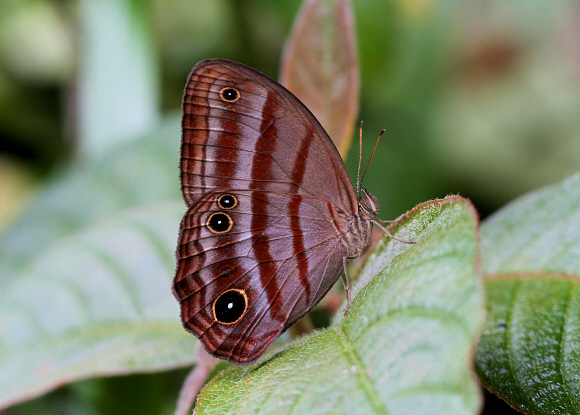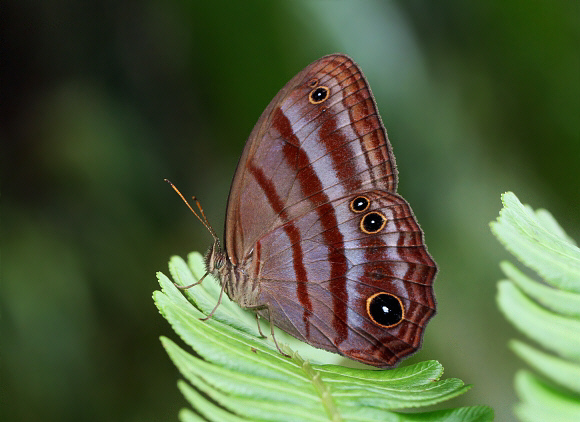
Introduction
There are 1100 known species of Satyrinae in the neotropical region. About 400 of these are placed in the Euptychiina. Butterflies within this tribe include the ‘ringlet’ genera Euptychia, Magneuptychia, Harjesia, Cissia, Caeruleuptychia, Magneuptychia, Harjesia etc; together with Oressinoma and the various ‘wood nymph’ genera i.e. Parataygetis, Posttaygetis, and Taygetis. Most are inhabitants of the forest understorey and tend to fly close to the ground. They generally avoid sunlight and prefer to fly at dawn or on cloudy days when light levels and temperatures are low.
There are 40 known species in the genus Magneuptychia including 11 recently described by Lamas but as yet unnamed. The butterflies are slightly larger than most other ringlets and typically have a grey ground colour overlaid with a bluish sheen. The bands on the underside are always narrow, well defined and reddish in colour. The ocelli on the hindwings are prominent and the 2 largest ones each contain a pair of tiny white dots.
Magneuptychia tiessa is distributed from Nicaragua to Ecuador.
Habitats
The butterfly occurs in cloudforest at elevations between about 500-1500m.
Lifecycle
I have no data relating to the lifecycle of tiessa. The lifecycle is likely to be similar to that of libye as follows: The egg is round and laid singly on or near the foodplants. The larva when fully grown is pale brown with darker and paler lines and striations along the back and sides. The head bears a pair of short conical horns. It feeds nocturnally on the grass Panicum ( Poaceae ) and rests during daylight at the base of the plant. The chrysalis is back with a hint of pink along the abdomen.

